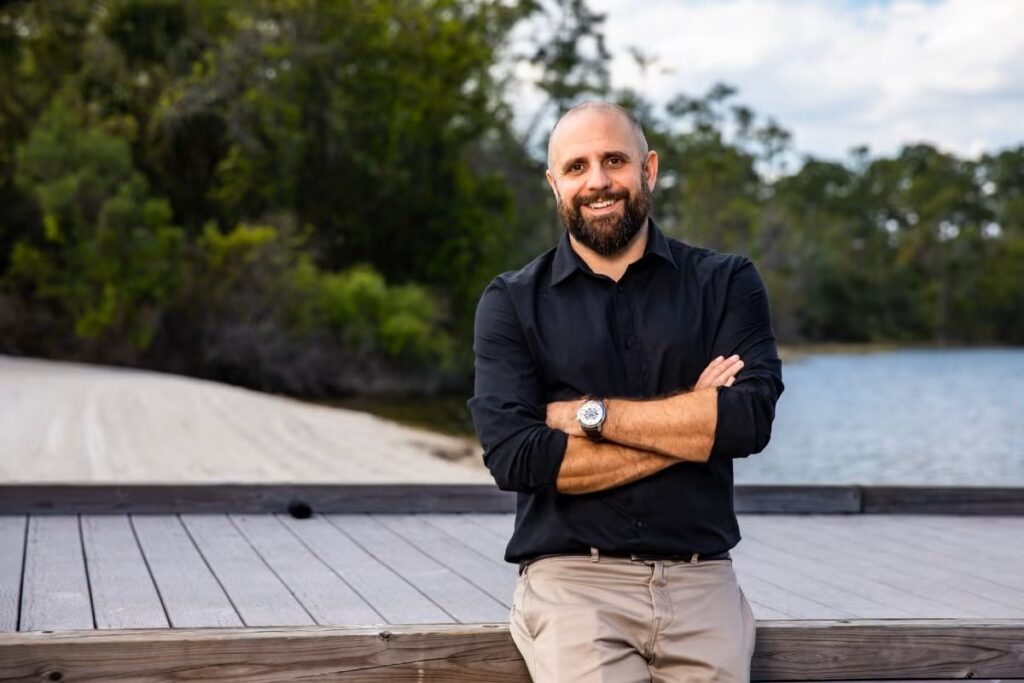By Ryan Randall, University of Central Florida News
As sea levels rise and coastal areas become increasingly vulnerable to flooding during hurricanes and storms, a UCF researcher is using machine learning to better prepare communities.
Thomas Wahl, an associate professor in the UCF Department of Civil, Environmental and Construction Engineering, studies flood-prone areas through the Coastal Risks & Engineering (CoRE) lab. The lab, which Wahl founded, monitors changes in coastal sea levels (mean and extreme), ocean waves, and freshwater flows and the associated impacts. The data is used to support the development of sustainable and resilient adaptation strategies.
Current projects at the lab focus on storm surges — particularly the statistical likelihood of events like a 100-year or 1% chance storm surge in regions close to the water such as Tampa, Cedar Key, New Jersey and others across the globe. The lab uses machine learning modeling techniques to simulate observed and hypothetical flooding scenarios in the studied areas, helping to gather more data and understand how to better protect these cities,. This approach complements traditionally used hydrodynamic models, which solve the processes that contribute to flooding and are computationally very expensive.
While hurricanes are often associated with high wind speeds, it is often not the biggest concern for the health and safety of residents. Approximately 90% of all deaths in hurricanes worldwide are caused by drowning in either the storm surges or flooding caused by intense rainfall, according to the Florida Climate Center,
Wahl and his team started working with machine learning during a study a few years ago with NASA to assess how storm surges have changed over the last hundred years in different parts of the world. Using data from NASA satellites, they examined those trends by exploiting the relationship between the wind and pressure field and the resulting storm surge, which is measured by a tide gauge — a device that measures sea level.

To explore those relationships, they used machine learning algorithms to identify complex interactions between wind, pressure and water levels. That included studying a hundred years of wind and pressure data they have from climate reanalysis and using it to reconstruct storm surge data over the last century, examining trends and changes in storm surge characteristics.
This research has paved the way for additional projects, including one with the Department of Defense that studies flooding risk at military installations worldwide and a new project with NASA where additional satellite data will be included in the analysis. This will also involve investigating how storm surges have evolved over time, and how large-scale climate variations such as El Nino and La Nina, influence storminess and storm surge risks and flooding risk in general.
By studying flooding in many places and collaborating with various partners and stakeholders, Wahl’s team transfers knowledge across regions facing similar challenges. For example, they’re using data and information learned about New Jersey to apply to places in Florida, such as Jacksonville, with similar flood-prone areas. Through work with the Mississippi River Delta Initiative, a $22 million project supported by the National Academy of Sciences, Wahl and his team are looking at tools and methodologies they could adjust to potentially benefit Florida’s vulnerable regions.
Based on the research, Wahl says there is a wide range of things that communities can do to adapt to flooding. Miami is investing into pumping water out of the streets when flood events take place. Other areas have nature-based solutions, where wetland and oyster reefs are re-engineered to help absorb storm surge and wave energy during storms. However, it’s not a one size fits all solution and depends on the region.“It really depends on what type of event you are preparing for and what economic resources you have at your disposal to implement those solutions,” Wahl says. “We have a lot from gray to green to hybrid infrastructure that can be done, but it’s really very localized.”
As Wahl looks to understand flood-prone areas more, the evolution in technology is allowing him to be better equipped to do so.
“Ten to 20 years ago, people would’ve said it is impossible to run a global storm surge model to reconstruct storm surge globally for 50 years with a high-fidelity process-based model that actually captures the physics,” Wahl says. “Now, there are different versions of those models out there that run at the global scale on supercomputers. It’s the same with the machine learning. I think it’s really the computational resources that have improved and opened doors that we didn’t think would open so quickly.”
Banner image: Flooding in Naples due to Hurricane Ian (iStock photo). This piece was originally published at https://www.ucf.edu/news/studying-the-surge/.
Sign up for The Invading Sea newsletter by visiting here. If you are interested in submitting an opinion piece to The Invading Sea, email Editor Nathan Crabbe at ncrabbe@fau.edu. To learn more about storm surge, watch the video below.



